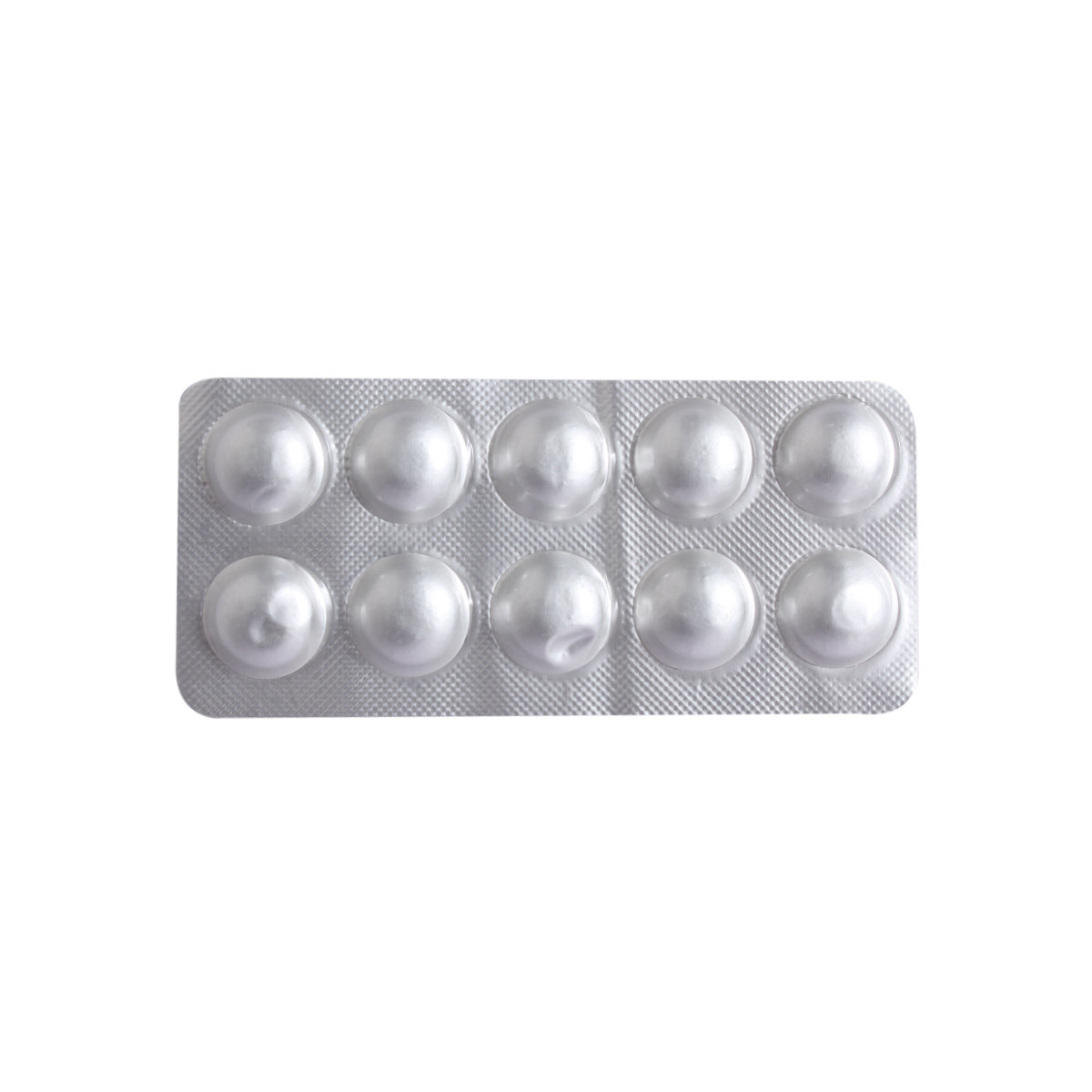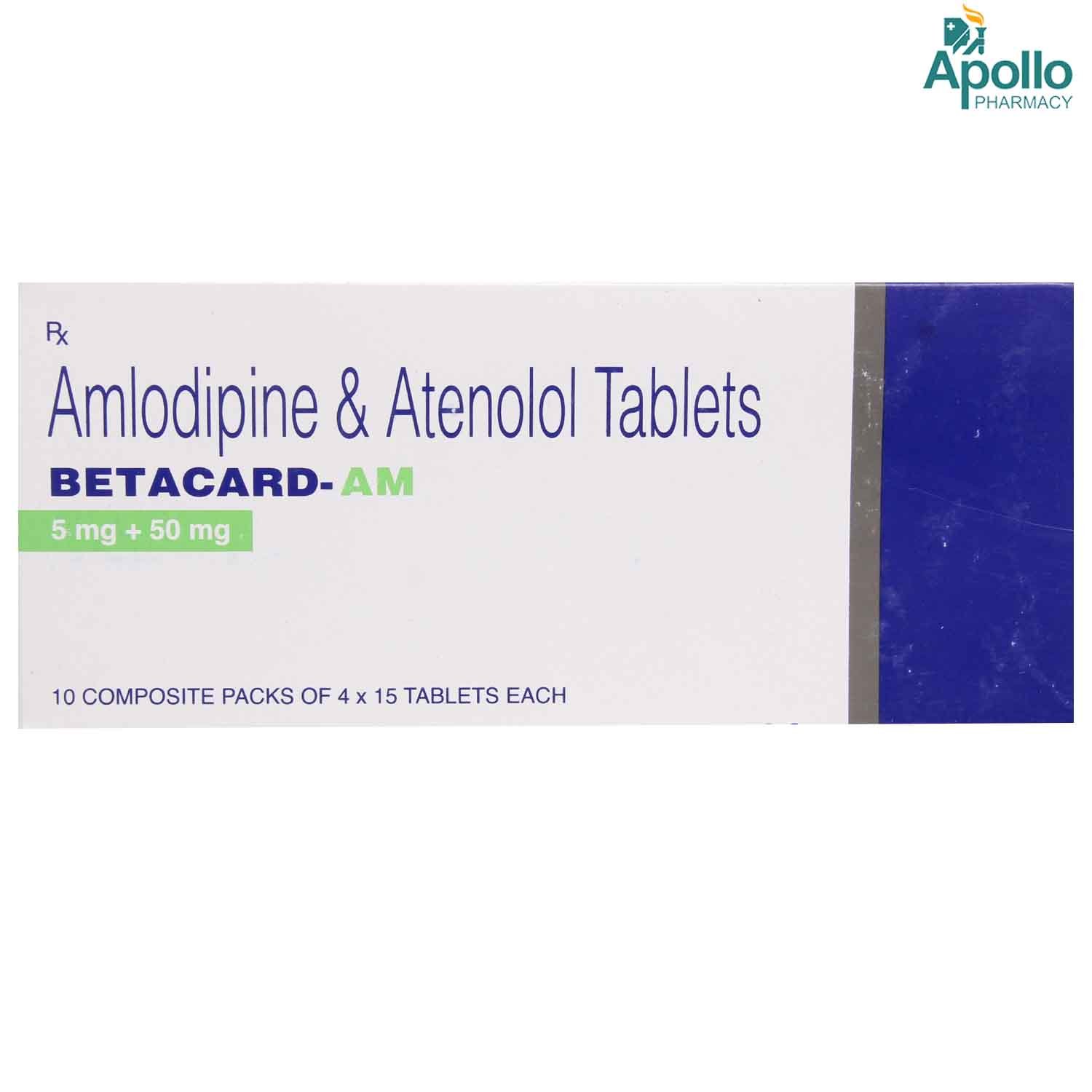Amlodipine+atenolol
About Amlodipine+atenolol
Amlodipine+atenolol belongs to a class of 'anti-hypertensive' medication primarily used to treat hypertension (high blood pressure). Hypertension (high blood pressure) is a lifelong or chronic condition in which the blood pressure against the artery walls becomes too high. This can lead to damaged blood vessels, heart disease, stroke, kidney disease, and other problems.
Amlodipine+atenolol contains Amlodipine (a calcium channel blocker) and Atenolol (a beta-blocker). Amlodipine acts by relaxing and widening the constricted blood vessels. This ultimately reduces the heart's workload and makes the heart more efficient at pumping blood throughout the body. Atenolol works by blocking stress hormones like adrenaline and epinephrine, thereby slowing down the increased heart rate. Thus, it helps lower raised blood pressure, reducing the chances of heart attack or stroke in the future.
Take Amlodipine+atenolol as prescribed by your doctor. Depending upon your medical condition, you are advised to take Amlodipine+atenolol for as long as your doctor has prescribed it for you. The most common side effects of Amlodipine+atenolol are nausea, sleepiness, ankle swelling, headache, palpitations, low blood pressure, cold extremities, flushing (sense of warmth in the ears, face, neck, and trunk), slow heart rate, oedema (swelling), constipation, tiredness. They do not require medical attention and gradually resolve over time. However, if the side effects are persistent, reach out to your doctor.
Inform your doctor if you have had an allergic reaction to Amlodipine+atenolol, are pregnant or are planning to get pregnant, are breastfeeding, have liver disease, kidney disease, heart failure, a heart valve problem or a history of a heart attack. It is recommended to monitor your blood pressure if you have ever had a stroke or heart attack or are currently taking other blood pressure-lowering pills. It is advised to continue taking this drug and not stop taking it suddenly without consulting your doctor. It is advisable to drink plenty of fluids while taking this medicine. However, kidney patients should avoid taking plenty of fluids.
Uses of Amlodipine+atenolol
Medicinal Benefits
Amlodipine+atenolol is a combination drug containing 'anti-hypertensive' drugs containing Amlodipine (a calcium channel blocker) and Atenolol (a beta-blocker) primarily taken for the treatment of hypertension (high blood pressure). Amlodipine+atenolol reduces the heart's workload making the heart more efficient at pumping blood throughout the body and relaxing and widening the blood vessel. Thus, it collectively helps lower high blood pressure, reducing the chances of heart attack or stroke.
Directions for Use
Storage
Side Effects of Amlodipine+atenolol
- Nausea
- Sleepiness
- Ankle swelling
- Headache
- Palpitations
- Cold extremities
- Flushing (sense of warmth in the face, ears, neck, and trunk)
- Slow heart rate
- Oedema (swelling)
- Constipation
- Tiredness
Drug Warnings
Inform your doctor if you have had an allergic reaction to Amlodipine+atenolol, are pregnant or are planning to get pregnant, are breastfeeding, have liver disease, kidney disease, heart failure, a heart valve problem, or have a history of a heart attack. And also disclose to your doctor all the prescription and over-the-counter medications you use, including vitamins, minerals, herbal products, and drugs other prescribed medications. You must closely monitor your blood pressure if you have ever had a stroke or heart attack or are currently taking other blood pressure-lowering pills. Do not start using a new medication without telling your doctor. And also, keep your doctor informed if you are taking anti-diabetic medicines along with Amlodipine+atenolol. Amlodipine+atenolol contains Atenolol, a category D pregnancy drug, so it should not be taken if you are pregnant, planning to become pregnant, or breastfeeding, as it can harm the baby. Lifestyle changes are beneficial in achieving optimum outcomes with Amlodipine+atenolol and keeping blood pressure under check. A low salt diet, daily physical activity, losing weight in the case of people who are obese, etc., are the mainstay of the treatment of hypertension.
Drug Interactions
Drug-Drug Interactions: Amlodipine+atenolol is known to interact with potassium-sparing diuretics (amiloride, eplerenone, spironolactone), anti-depression medication (lithium), high blood pressure-lowering pills (benazepril, metoprolol, ramipril, hydrochlorothiazide), drugs used to control lipid levels in the blood (atorvastatin, simvastatin), medicines to treat erectile dysfunction (sildenafil), antibiotics (clarithromycin, erythromycin, rifampin), antifungal (itraconazole, ketoconazole), anti-HIV drugs (ritonavir), anti-epilepsy medicines (carbamazepine, phenytoin, phenobarbital, primidone), immune-suppressing drugs (cyclosporine, tacrolimus) and painkillers (ibuprofen, aspirin).
Drug-Food Interactions: Amlodipine+atenolol is known to interact with grapefruit juice and alcohol. So, it should not be taken along with the Amlodipine+atenolol.
Drug-Disease Interactions: Amlodipine+atenolol is known to interact if you have kidney or liver problems, heart disease, diabetes, myasthenia gravis (muscle weakness), glaucoma (increased eye pressure), asthma, hypotension (low blood pressure), cardiogenic shock (when the heart fails to pump required blood to the body).
Drug-Drug Interactions Checker List:
Safety Advice

Alcohol
cautionYou are recommended not to consume alcohol and Amlodipine+atenolol to avoid unpleasant side effects like lowering blood pressure (hypotension).

Pregnancy
cautionAmlodipine+atenolol contains atenolol, which is a pregnancy category D drug. It is known to harm the baby if taken during pregnancy. So it is better to avoid intake of Amlodipine+atenolol in pregnant women in their second and third trimesters.

Breast Feeding
cautionAmlodipine+atenolol can pass through the breast milk and harm the baby, so it should not be taken while breastfeeding.

Driving
cautionDrive with caution. Amlodipine+atenolol usually causes drowsiness and affects driving ability.

Liver
cautionAmlodipine+atenolol to be taken with caution, especially if you have had a history of liver disease. Your doctor will have to change the dosage depending on your medical condition and your reaction to treatment.

Kidney
cautionAmlodipine+atenolol to be taken with caution, especially if you have had a history of liver disease. Your doctor will have to change the dosage depending on your medical condition and your reaction to treatment.

Children
cautionAmlodipine+atenolol is not recommended for children below six years of age without a doctor's consent. The dose is to be adjusted and guided by a child specialist only for children above six years.
Habit Forming
Diet & Lifestyle Advise
- Create a well-balanced and healthy diet that includes vegetables, fruits, whole grains, legumes, omega-3-rich foods, and lean protein sources.
- Keep your weight under control with a BMI of 19.5-24.9.
- Avoid chronic stress, as it can raise your blood pressure.
- Spend time with your loved ones to cope with stress and practice mindfulness techniques.
- Be mindful of salt; consume no more than 2,300 mg each day.
- Limit or avoid alcohol consumption.
- Quitting smoking is the best strategy to lower the risk of heart disease.
Patients Concern
Disease/Condition Glossary
Hypertension: The blood exerts increased pressure on the walls of blood vessels leading to hypertension. High blood pressure is expressed as systolic/diastolic pressure. Systolic pressure is the pressure in the arteries when the heart beats or pumps out blood. Diastolic pressure is the pressure in the arteries between the heartbeats. Blood pressure is measured in millimetres of mercury (mmHg) by a blood pressure monitor called a sphygmomanometer. Some of the symptoms are headache, dizziness, nosebleeds, altered vision, chest pain, weakness, and shortness of breath. However, most of the time, the signs and symptoms of hypertension are none.
FAQs
Amlodipine+atenolol is a combination of anti-hypertensive medications. Amlodipine acts by relaxing and widening the constricted blood vessels. This reduces the heart's workload and makes the heart more efficient at pumping blood throughout the body. Atenolol works by slowing down the heart rate of the heart. Thus, it collectively helps lower high blood pressure, reducing the chances of heart attack or stroke.
No, you are advised to inform your doctor and monitor your blood pressure for at least two weeks before stopping the medicine. Depending upon your current blood pressure readings, there is a possibility your doctor may lower your medicine dosage and not recommend discontinuing it. If you suddenly stop taking Amlodipine+atenolol, it may cause a jump in blood pressure, chest pain, or can even lead to a heart attack.
Yes, Amlodipine+atenolol is known to cause ankle swelling upon long-term use. Please try to keep your feet up when sitting for long hours. If the problem persists still, consult your doctor and do as advised.
High blood pressure during pregnancy is called 'Pregnancy-induced hypertension (PIH). It is harmful to both the baby and the mother. In the mother, very high blood pressure can cause seizures (fits), headache, swelling of feet, kidney damage, and a higher risk of bleeding during pregnancy and during delivery. This can also affect the baby by causing abnormal fetal heart rate, risk of stillbirth and a small baby. So, during pregnancy, you should have regular blood pressure monitoring. Visit your Obstetrician if you have any concerns about blood pressure during pregnancy.
It is also known as fluid retention or fluid overload. Due to oedema, the affected area starts swelling up. If it does not subside, please consult your doctor immediately.
Yes, Amlodipine+atenolol can cause dizziness sometimes, so it is advised to avoid driving or operating heavy machinery while taking Amlodipine+atenolol. In case you feel dizzy or lightheaded, it is recommended to rest for some time until you feel better.
Yes, Amlodipine+atenolol is contraindicated in people with known allergies to any of this medicine's components. It should be avoided in people with severe kidney or liver impairment and people with anuria (reduction or absence of urine). It should also be avoided for use in pregnant women who are in the second and third trimesters of their pregnancy.
The effect of this medicine can be observed within 2 to 4 hours.







